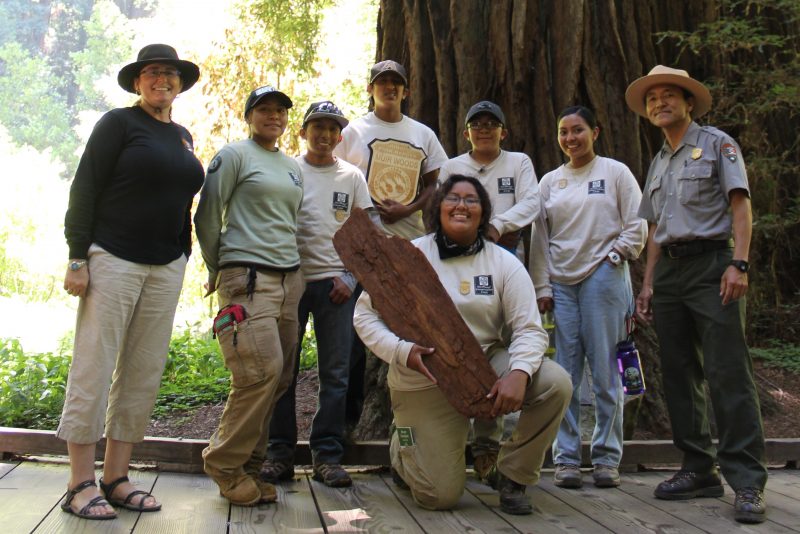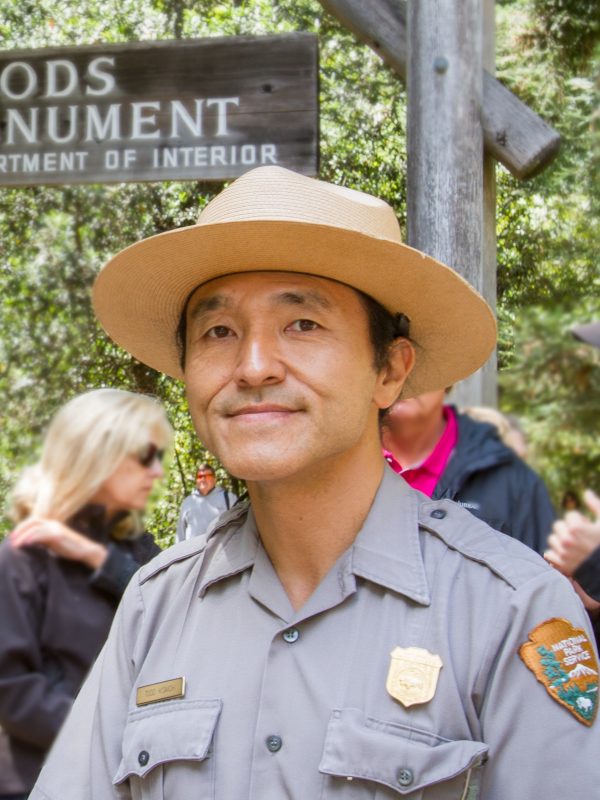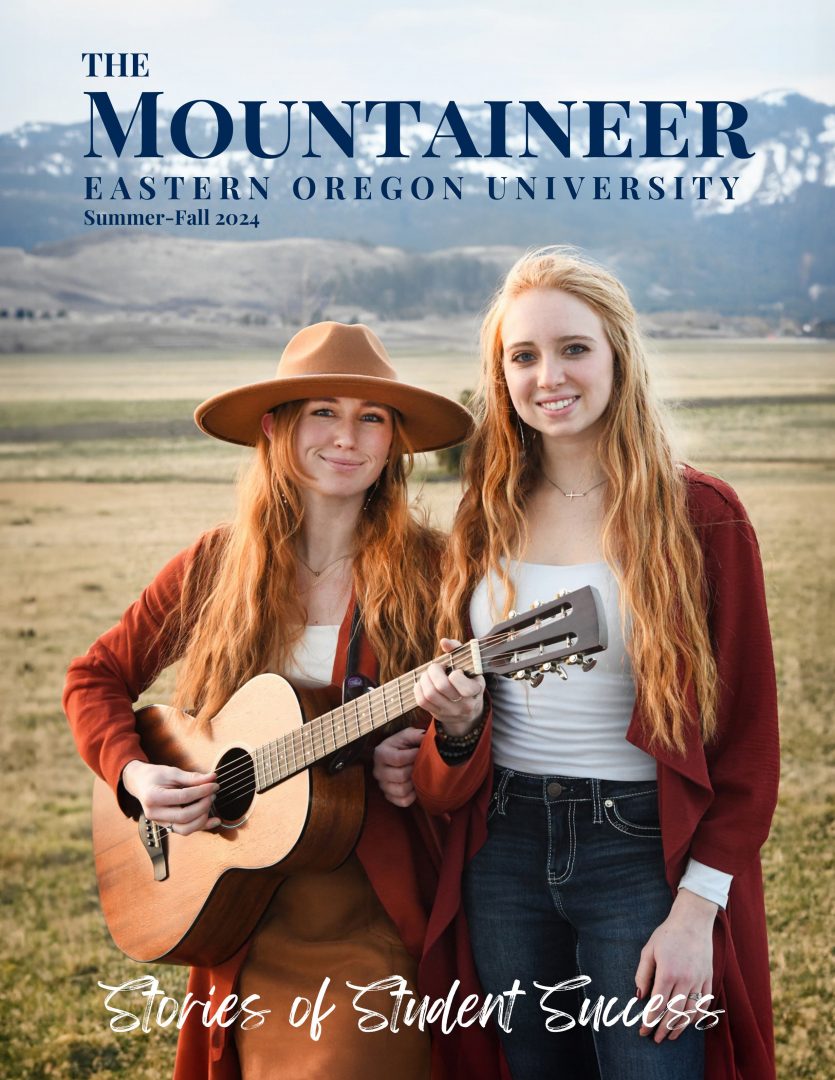Finding their park

After 12 years of working in traditional Hopi homelands at the Petrified Forest National Park, Sarah Herve, ’03, got to introduce a group of young people from the Indigenous tribe to her own origins in the San Francisco Bay Area.
The trip was part of the Native Conservation Corps summer internship program that Herve founded with fellow park ranger and alumnus Todd (Tatsuya) Hisaichi, ’92. They worked together in northern Arizona implementing education programs for kids and teens in the Petrified Forest National Park. Hisaichi had been wondering for a while about how to better include indigenous groups like the Hopi, Zuni and Dine (Navajo) in the park, and a grant opportunity arose that allowed them to do just that.
“I thought that we could have a better partnership with Native American tribes, since the park is surrounded by tribes and it’s an ancestral homeland for many tribes, but we didn’t have any targeted programs then,” he said.
With $15,000 from the National Park Foundation, he and Herve launched the first Native Conservation Corps (NCC) crew in 2011 with seven Dine teens. The high school students lived in the park, received a stipend, and shared aspects of their culture with visitors during ranger talks. They also pursued job skills in a variety of areas.
“Parks have a wide range of career options: law enforcement, IT, customer service, scientists, it goes on,” Hisaichi said. “They can represent their culture to the public in national parks, so people can have a better understanding of the place they’re visiting while students develop public speaking skills.”

Participants chose a range of cultural practices to share, from hair and clothing, to ceremonial structures, foods, and storytelling. They introduced themselves in their own languages and using traditional names.
“It may have been the first time those languages were heard in the park because for a long time it was forbidden,” Hisaichi said.
Herve explained that from the 1880s to the 1920s the U.S. mandated that Native American children attend boarding schools, where they were punished for speaking native languages.
“Hearing them introduce themselves in the traditional way, by talking about who their mothers and grandmothers are—I get chills thinking about it,” Herve said.
Their visit to Herve’s hometown was also laced with the reverberations of oppression. The group went to Golden Gate National Recreation Area and Alcatraz Island, a location that carries heavy history for Hopi people.
“Perceptive people noticed the significance of this endeavor,” Hisachi said. “When I went with the Hopi students to Alcatraz, people who were aware of the history were excited to see some justice done.”
He explained that Native American communities were sanctioned for refusing to send their children to boarding schools, and Alcatraz served as a military prison where Hopi elders were held for defying the government mandate.
“The history is so well-hidden that many Hopi are not even aware of this,” Hisaichi said. “It was a chance to explore this history with those students and contemplate the whole history, not a selective or sanitized version.”
“We’re not here to just talk about just the happy bits of history,” Herve added. “Interpretation is also provocation. We hope to help people connect to these places that have been set aside for future generations in ways that affect them in their hearts and in their gut. Sometimes that can be parts of history that are disgusting or difficult, but have to be shared.”
Visitors seem to agree with her. Upwards of 70 people attended the students’ ranger talks when the program hosted a crew at Muir Woods, while others interacted with the NCC at Glen Canyon.
“Visitors found it amazing and were very curious about the program and the kids,” Herve said. “There are people in our country who think that all Native Americans live in teepees, and that’s so incredibly wrong and missing out on so much diversity. Different tribes have their own languages, dances, creation stories, ceremonial costumes—it’s rich, and visitors get a lot out of that.”
“EOU is a beacon for people who make a difference in the world.”
-Todd Hisaichi
Although Herve and Hisaichi never crossed paths at EOU, they’ve since discovered a myriad of commonalities. Herve earned her degree primarily through distance education courses while she worked at the John Day Fossil Beds. Hisaichi was an international student from Japan, and attended on-campus. He said Mountaineers share a set of values and a level of trust.
“EOU attracts certain people,” Hisaichi said. “It’s a special place, and that shows in the people who went there and graduated. EOU is a beacon for people who make a difference in the world.”
“Going through [distance education] has 100% made me the kind of self-motivated employee that I am for the park service,” Herve said. “I’m able to champion things, get things done.”
That attitude brought the NCC to life.
While the first summer program included all Dine students, the following years have integrated young people from different tribes. Hisaichi said he hopes this practice opens lines of communication and encourages friendships among students who wouldn’t otherwise meet.
Now, Herve and Hisaichi hope to see the program replicated at other parks. “Every park is the ancestral land of some tribe or tribes,” Hisaichi said. “Each tribe is unique, but they share the same challenges to thrive amid the dominant culture.”
Ten years of NCC crews have yielded impressive results. Herve said participants have gone on to study or work in conservation, criminal justice, biology, archeology and other subjects related to their internship experience.
“One young person at a time, it starts to have a broader impact,” she said. “They’re going into professions and bringing [their culture] with them.”
